May 12, 2025
Petals for Pollinators: New Episode
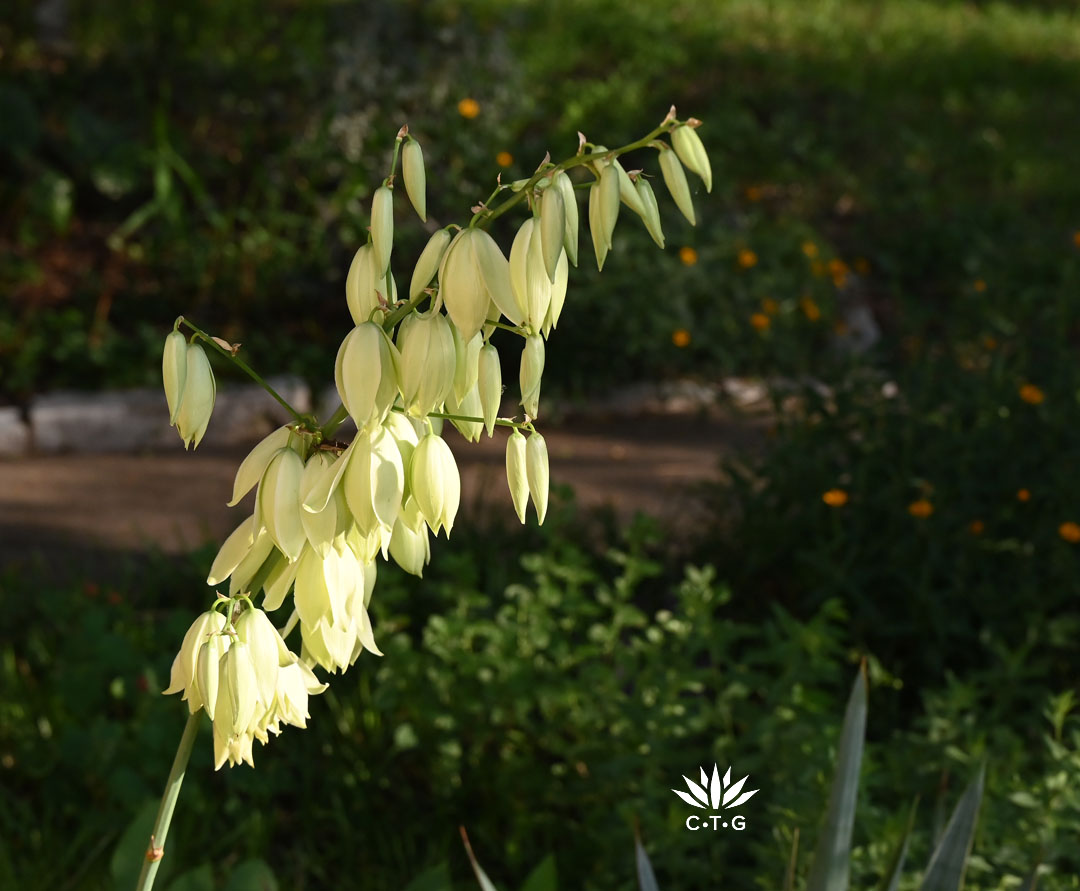
My trusty perennial team—through drought, freeze, snails, and drama queen temperature swings—carries on its May-as-usual. Out beyond the front window, yucca pallida’s puffy soft balloons greet us even from inside.
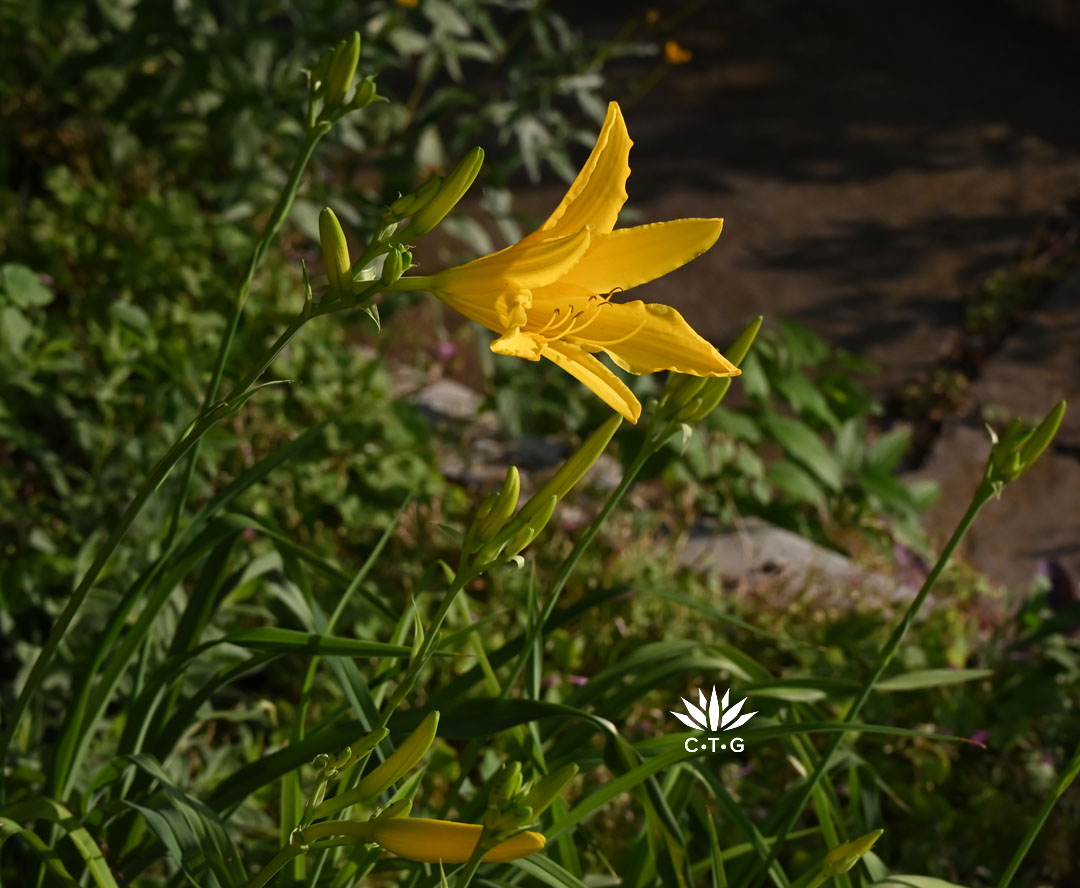
No-name daylily trumpets golden-yellow blossoms front and back, this one against native zexmenia. Mostly evergreen, it’s been through hard freezes, drought, and floods, and still carries on.
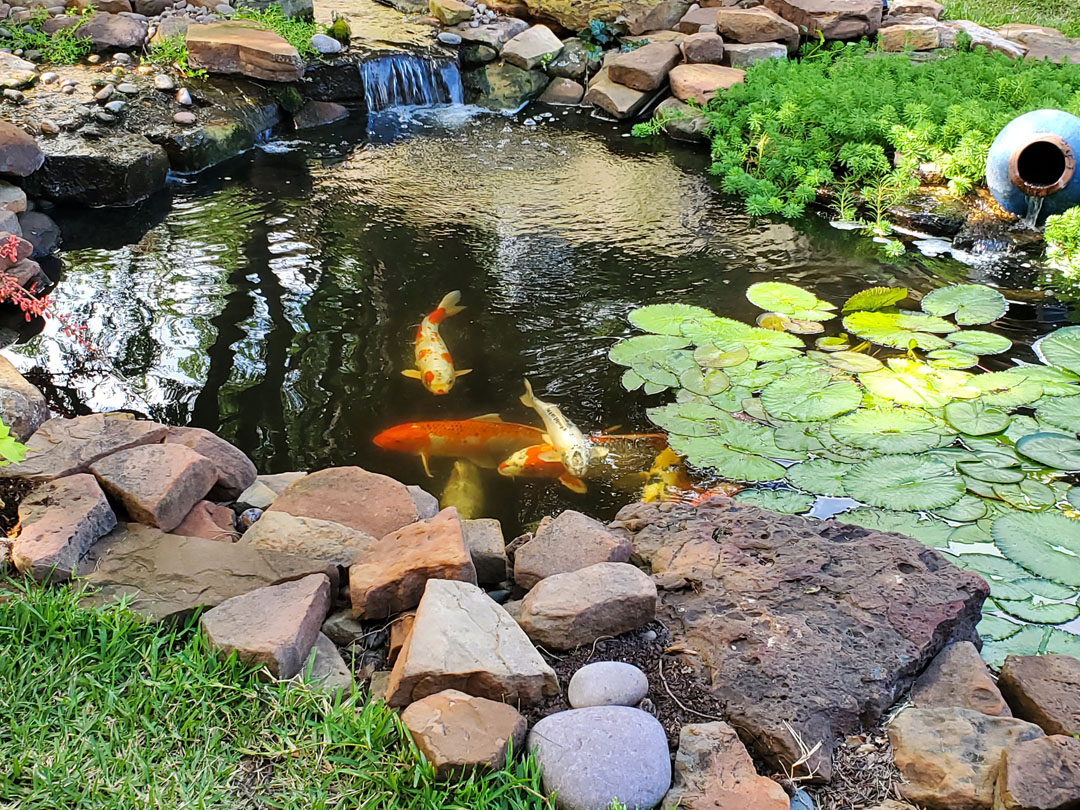
Quick note: Visit inspiring gardens and ponds and meet their makers at the 30th Annual Austin Pond Society Tour on June 7 and 8!
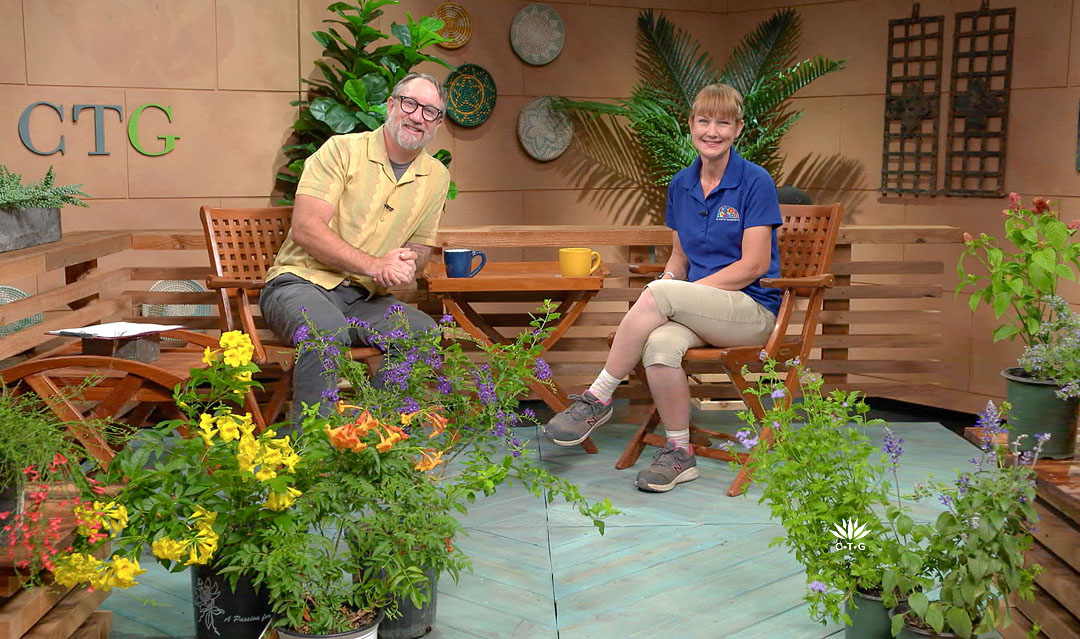
This week on CTG, we pop in lots of color, from groundcovers to shrubs, with Robin Norton-Carranco of Rainbow Gardens in San Antonio (two locations). She joins John Hart Asher to pick native and adapted plants for containers and beds in sun and shade. All attract pollinators and are deer resistant.

Robin’s an animated dynamo and pollinator specialist who gives us the facts and the fun behind each plant.

She brought along bumble bee faves including ‘Mystic Spires’ salvia and two varieties of esperanza (Tecoma stans).
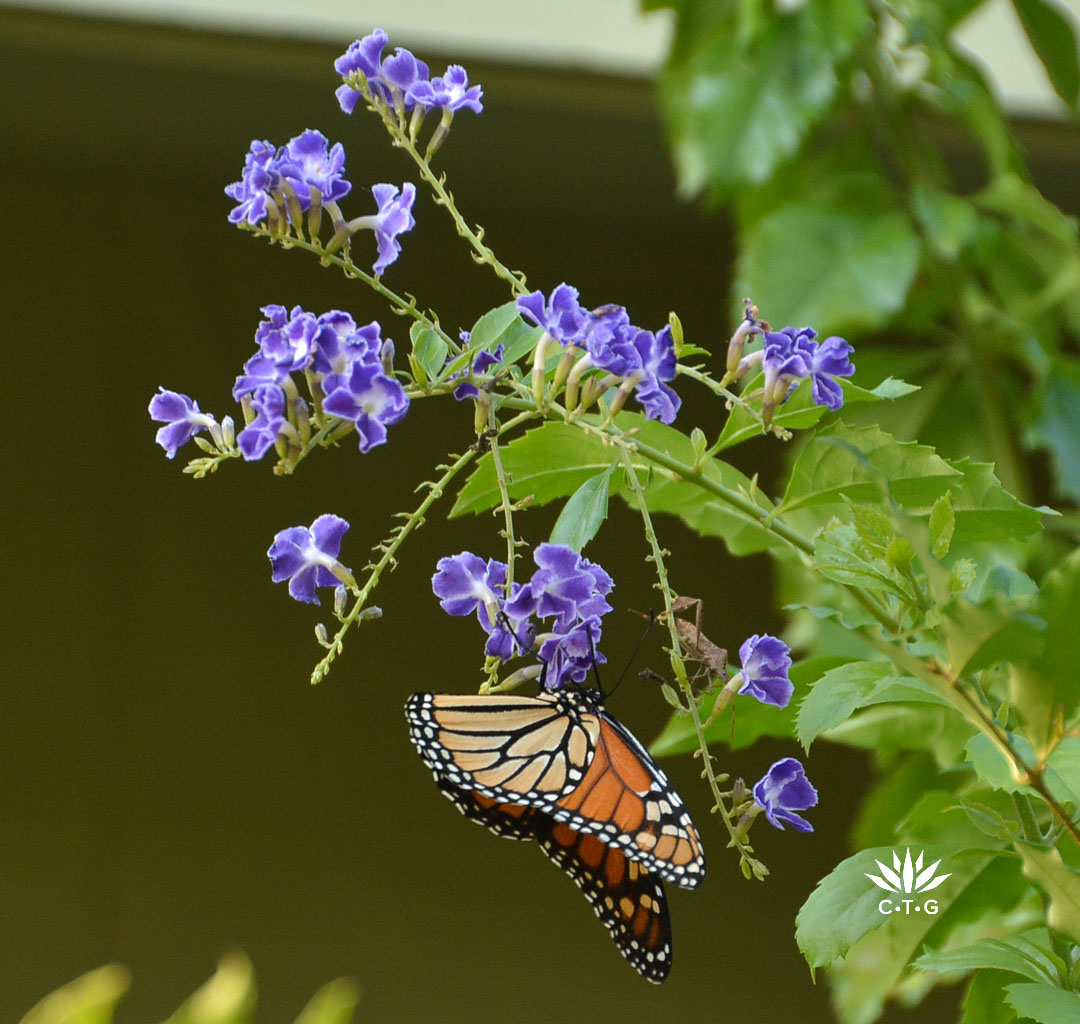
She includes shrubby duranta that dangles sweet purple flowers all summer. Native to Mexico and South America, like many of our adapted reliables, it’s not always cold hardy, depending on our microclimate or winter’s severity.
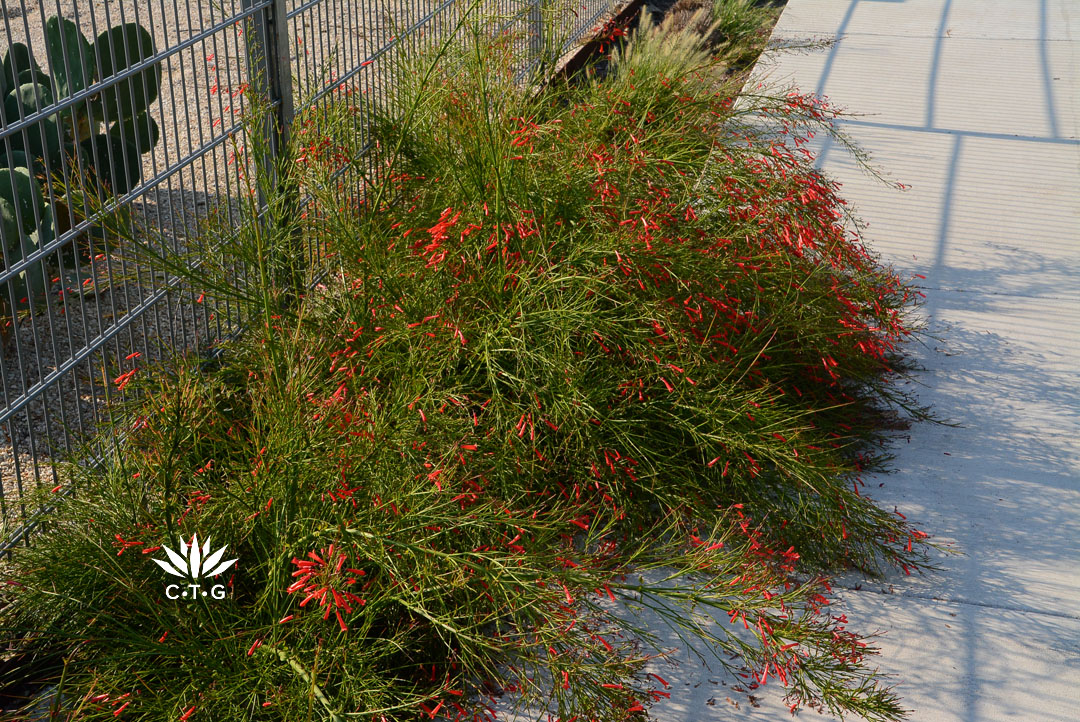
Perennial firecracker fern lives up to its name, defying the hottest days, while sparking hummingbird and butterfly attention. (For part shade, she includes shrimp plant for those hummers and butterflies.)
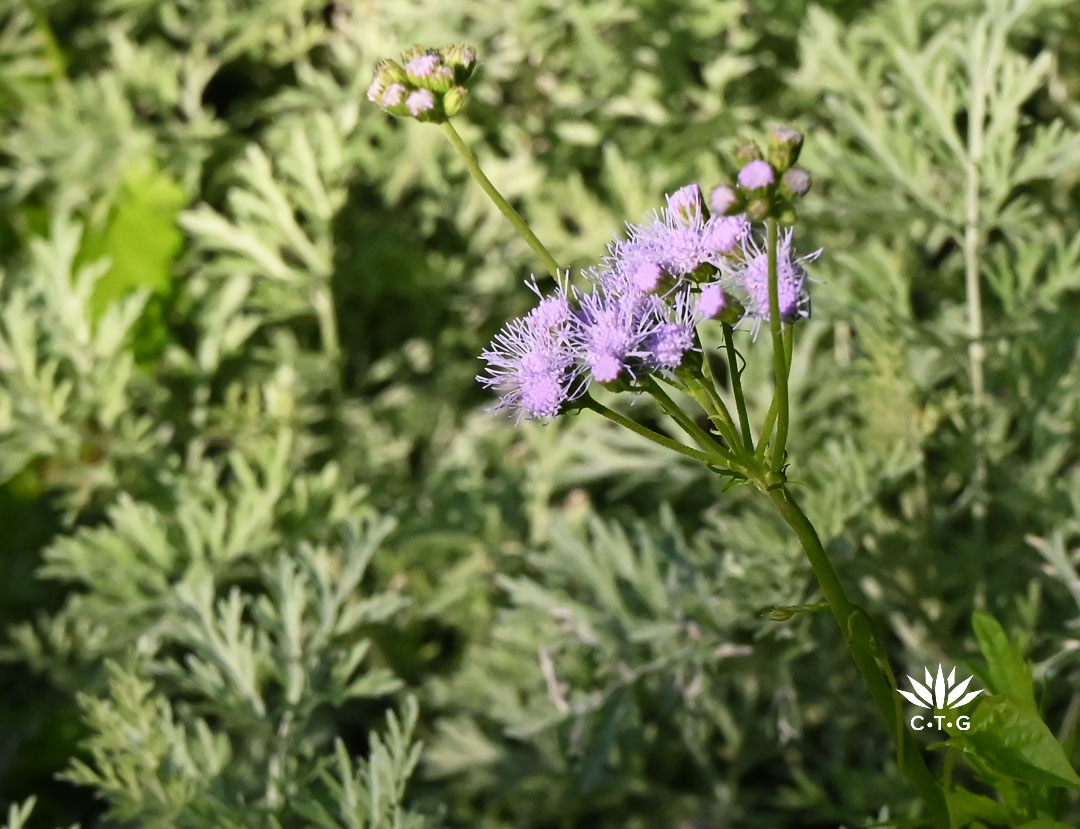
Native Gregg’s mistflower, a robust groundcover, is blooming now for many of us, softening the heat with fluffy lavender blossoms beloved by butterflies. Its prime time is fall, but late spring and even summer pop a few flowers. That lavender is especially luscious against the silvery ‘Powis Castle’ artemisia.
Note: When planting now, consider shade cloth for a week or so. Lightly layer mulch around them, and when watering, avoid saturating the soil. If a plant is wilting in the evening, that’s a natural response. Check the soil before watering more.
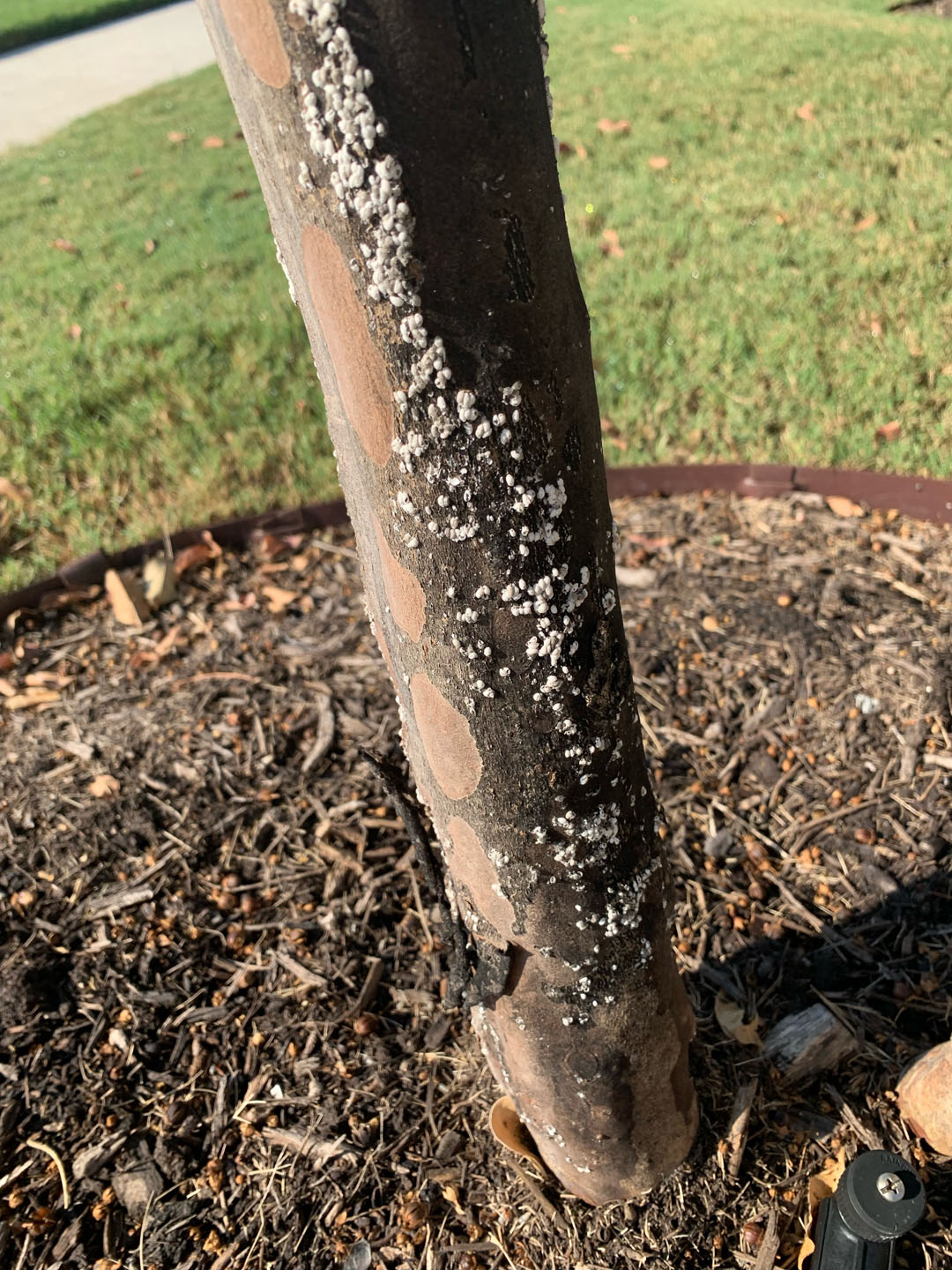
Next, there’s a “new” destructive pest in town: the crape myrtle bark scale, here on viewer Marie Dahmer’s tree. Texas A&M AgriLife entomologist Wizzie Brown explains its life cycle and how to identify it. “Once settled, they feed on phloem which leads to copious amounts of honeydew,” she told us. “Honeydew is an excrement from various plant parasitic insects that feed on phloem such as aphids, mealybugs, scale insects and others. Honeydew can lead to growth of sooty mold, which is a black fungus that can block photosynthesis from occurring.”
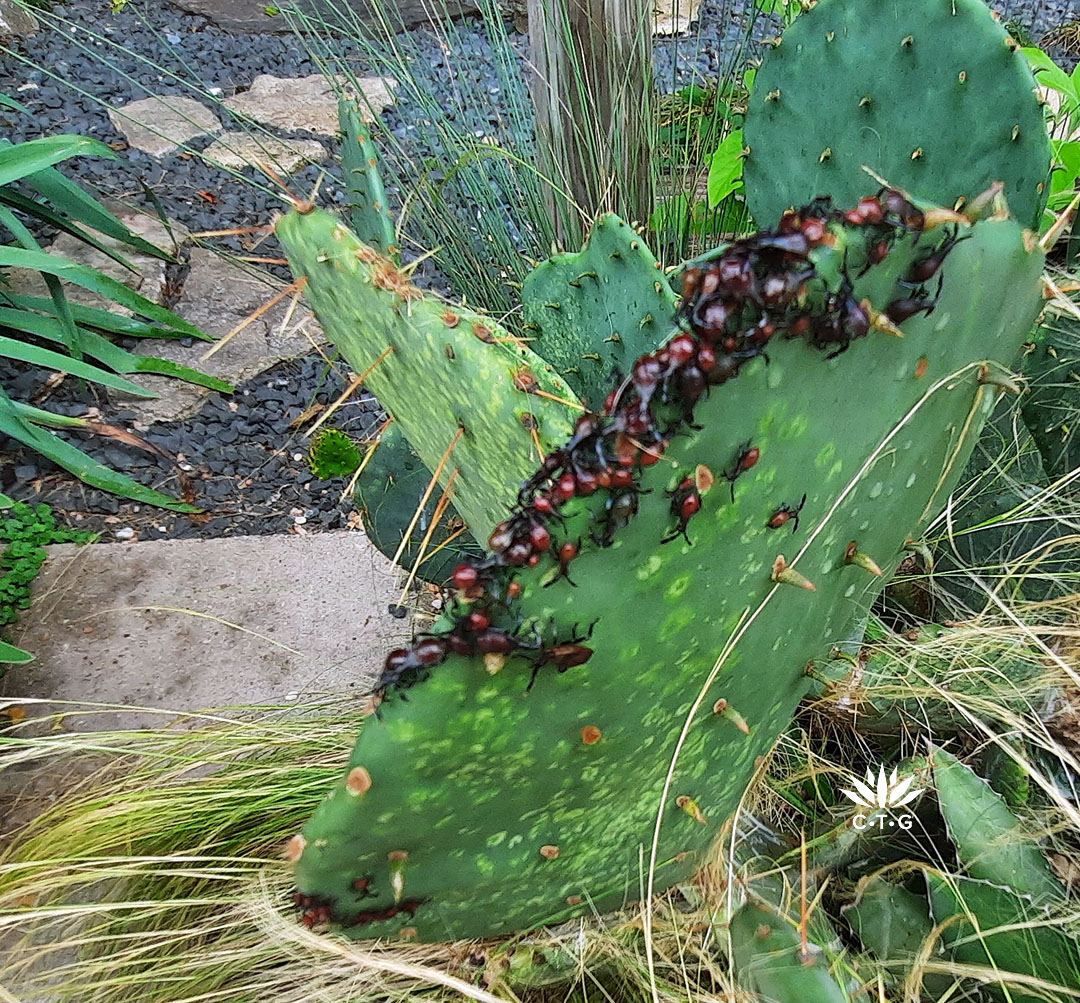
This time of year, we may also see bunches of red bugs on our prickly pears. These are cactus coreids that suck juices from plants, leading to those mottled yellow spots. Wear gloves and squish them or drop into a bucket of hot soapy water or isopropyl alcohol. Or, suck them up with a garden-dedicated hand-held cordless vacuum.
We can also use a high pressure water spray to remove soft-bodied insects, honeydew, and sooty mold at the same time. For crape myrtle bark scale and/or the tree’s sooty mold, wash down the trunk with soapy water and gently scrape away scales with a soft-bristled brush. Note: Avoid spraying horticultural oils or soap-based products now that it’s above 85° since they can burn plant leaves.
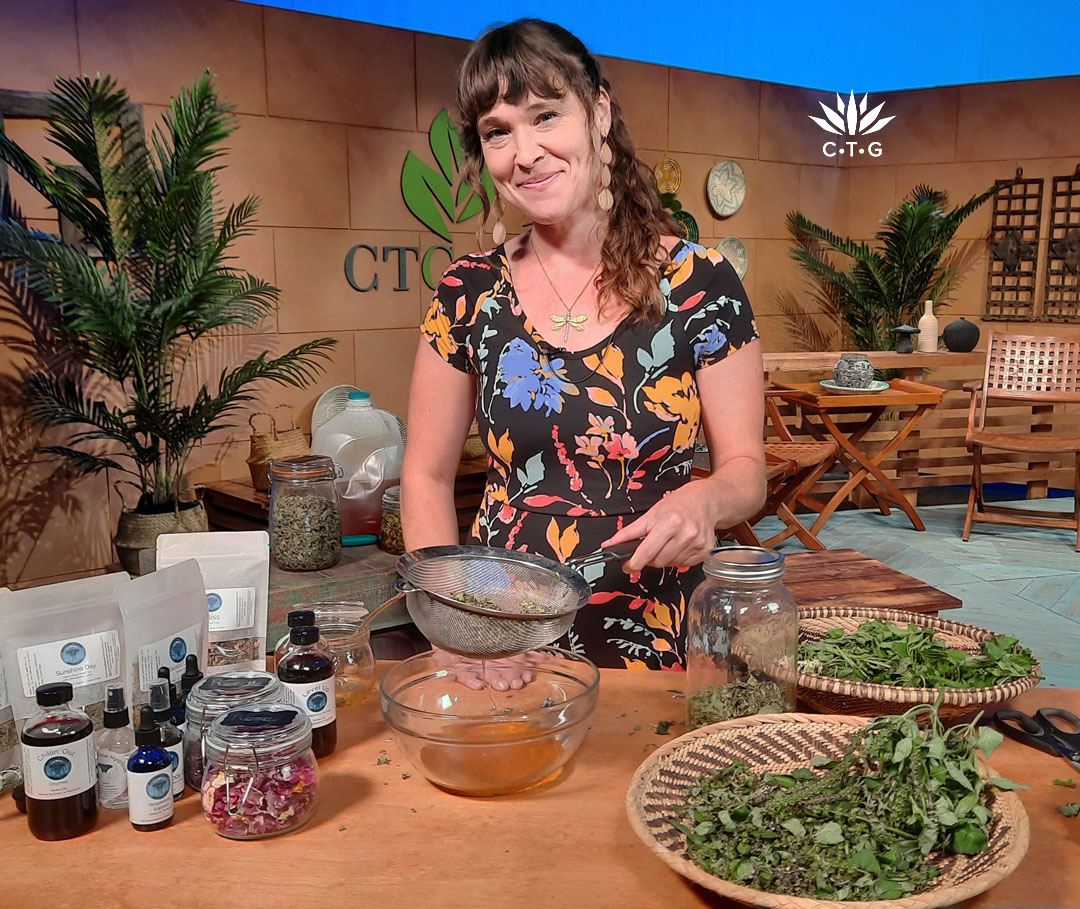
With 100°+ staring us in the face, let’s cool off with delicious herb infused honey and sun tea! Caroline Riley from Mutable Earth Botanicals and Whole Life Learning Center heads to the garden for wonderfully aromatic and healthful tulsi, mints, lemon balm and hibiscus. Dried herbs go into honey and when it’s ready, scoop some of the strained herbs and honey into a large jar. Add water, toss in more herbs and flowers, and let summer’s heat make your refreshing tea!
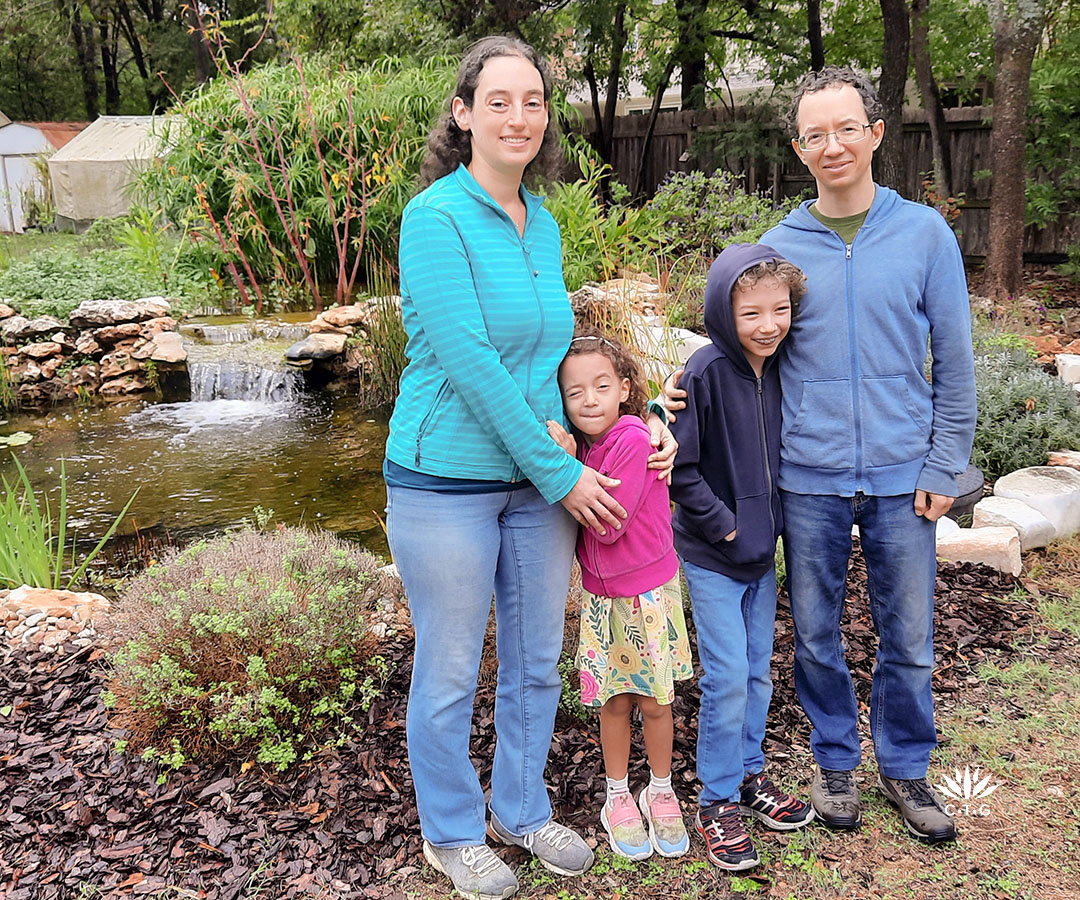
On tour from our November garden visit, musicians and home-schoolers Lisa and Shane Lamb grow their garden goals one weekend at a time.
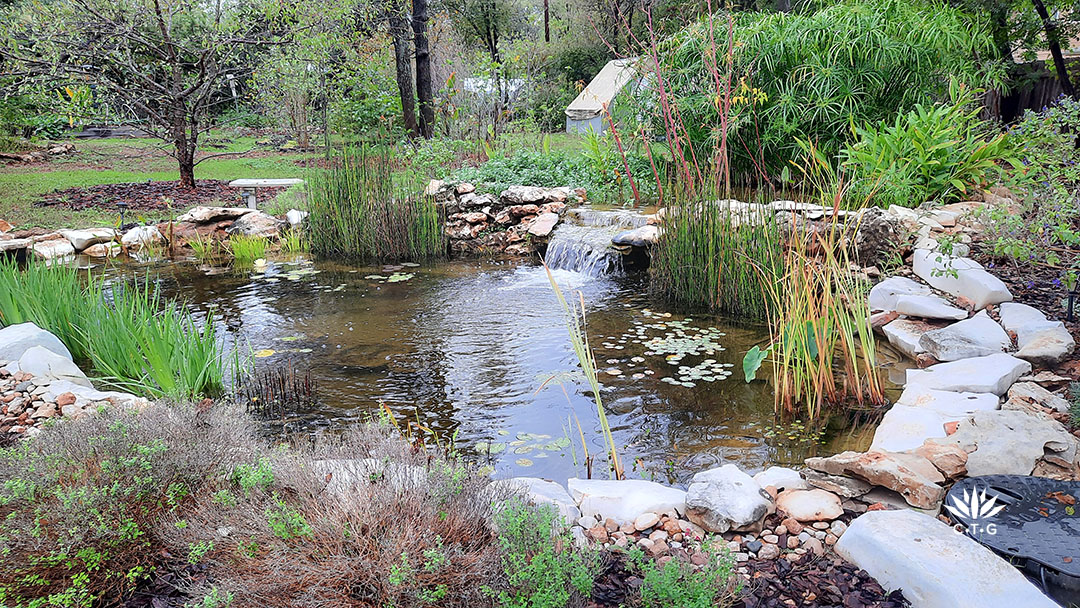
They started with homegrown vegetables and fruit trees—including things from the Asian markets—adding native plants for their woodsy wildlife habitat. To attract even more animals with water, they worked with Hill Country Water Gardens and Nursery to build a pond in 2021 (formerly on the Austin Pond Society tour, but not this year).
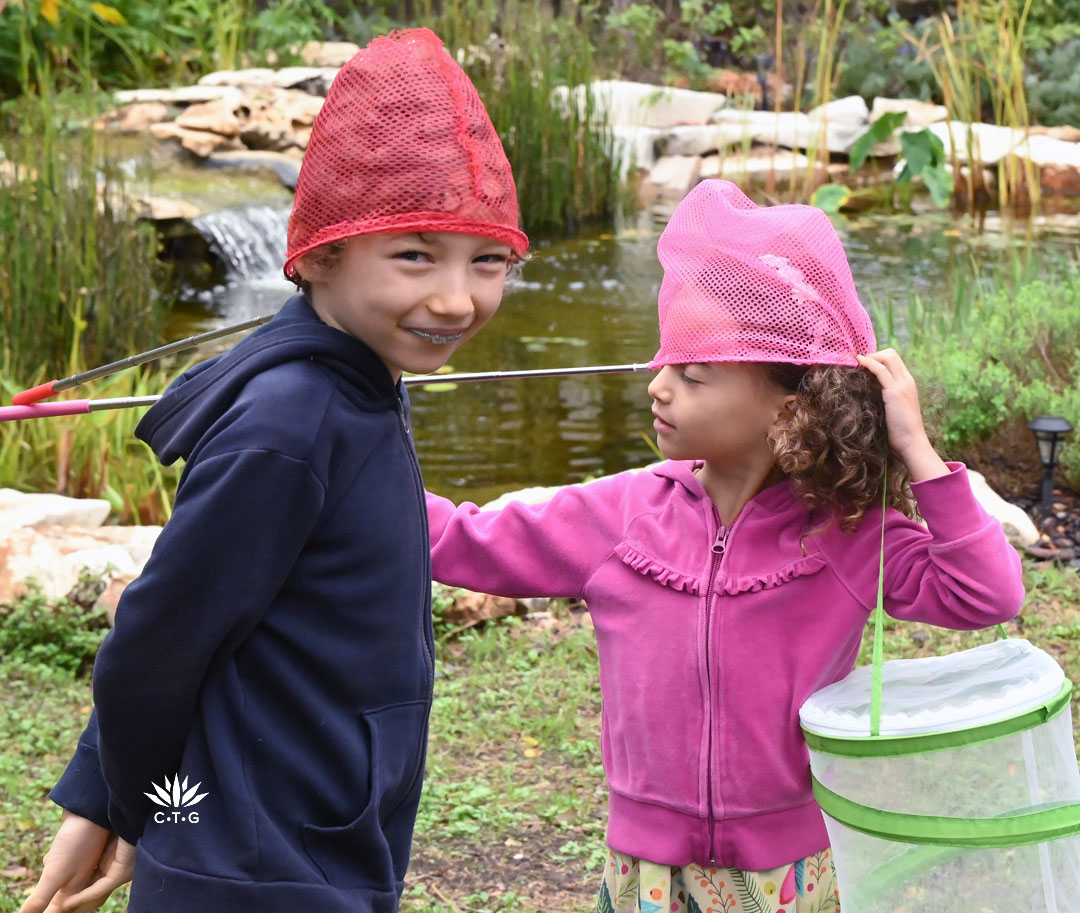
Their children Jay and Ella love their big backyard where everyday’s a nature excursion of discovery right at home. “I think being outside just inspires creativity. They have some fairy houses they’ve been building. They’ve got another fort that they have in the back,” Shane said. Read more and watch our story.
Thanks for stopping by! Next week, join us for enlightening words from Benjamin Vogt, author of A New Garden Ethic and Prairie Up!

